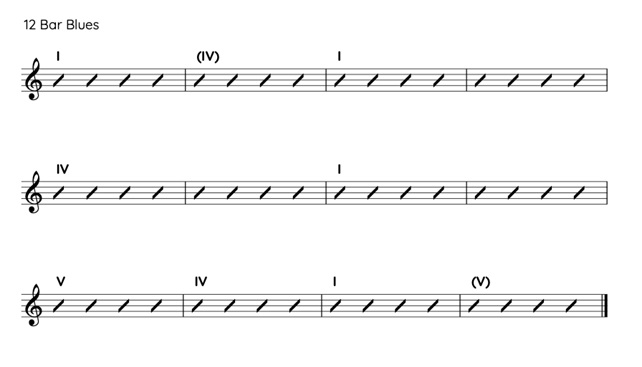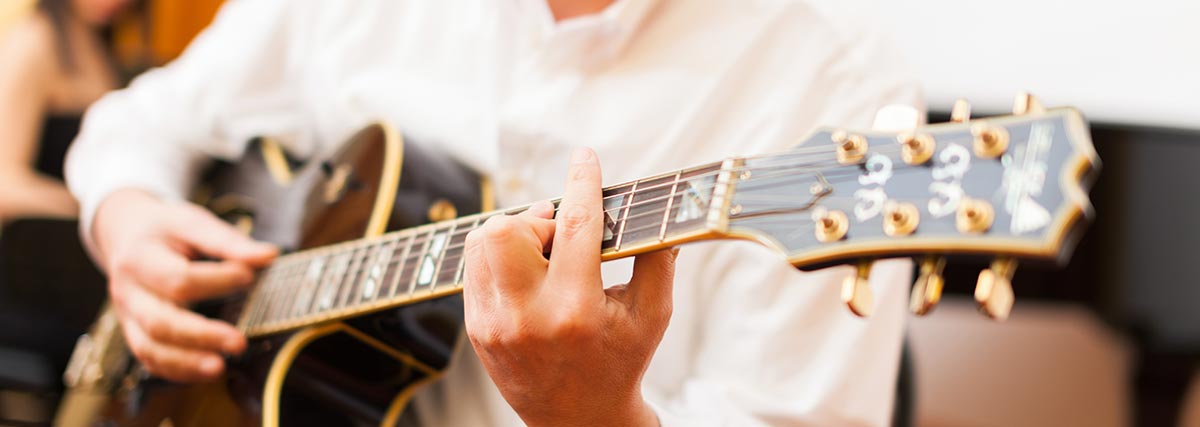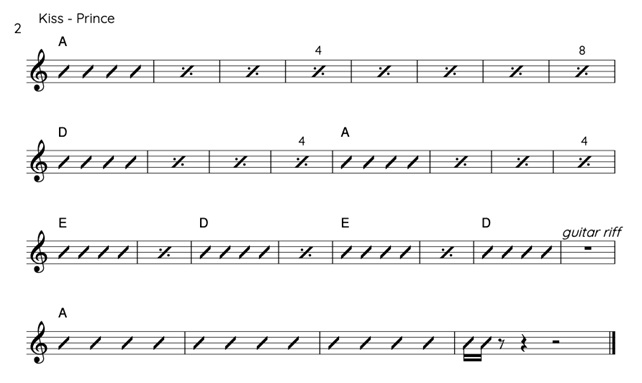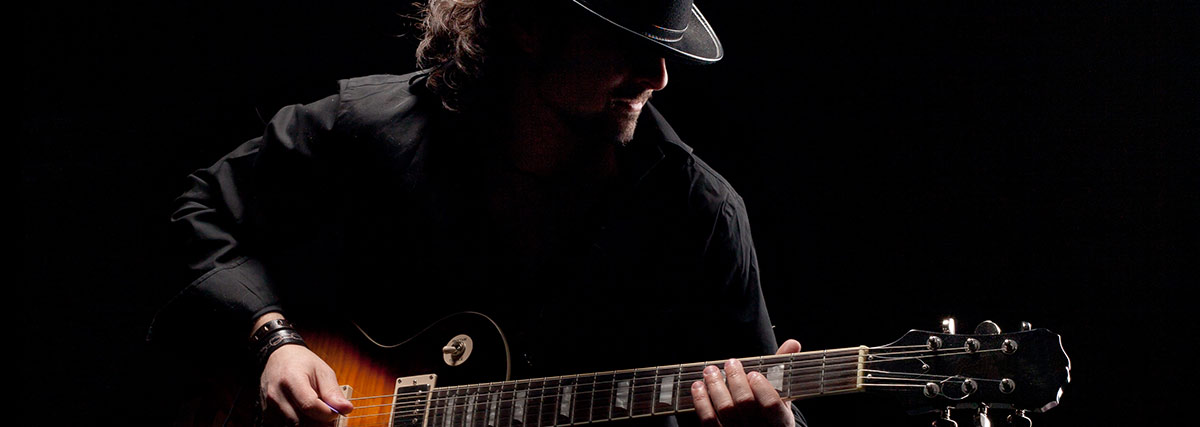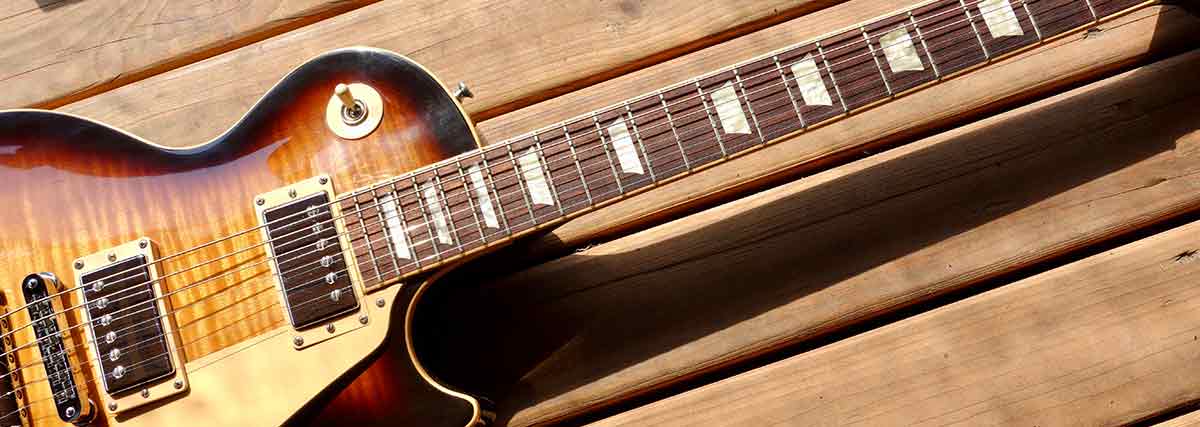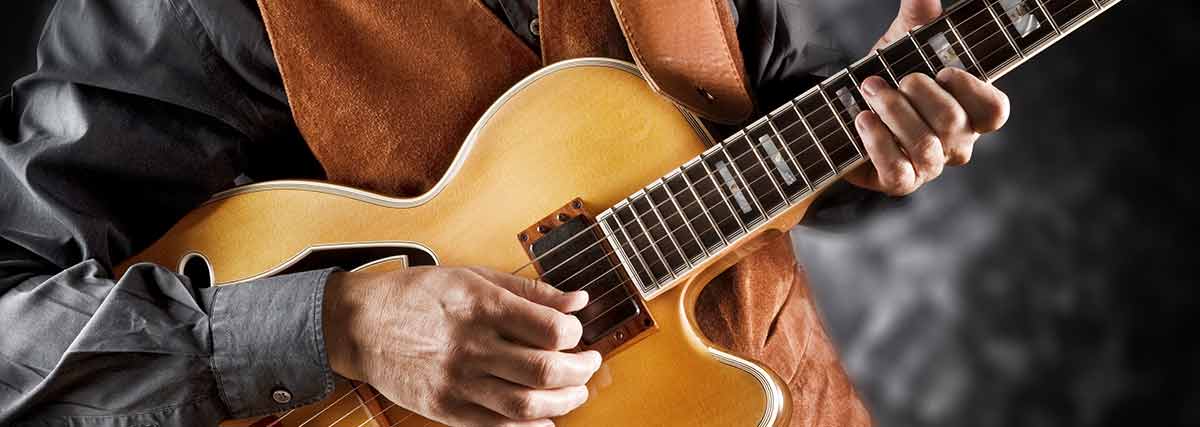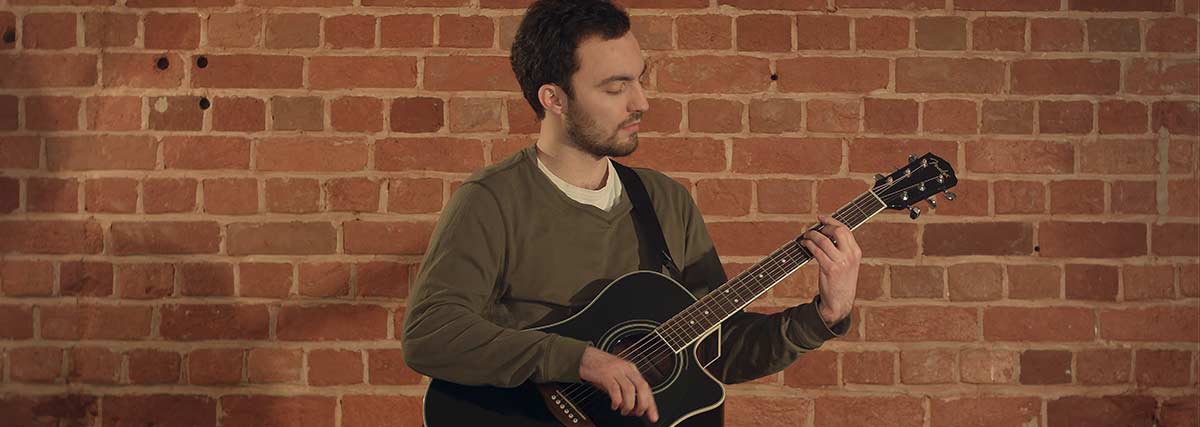What is Blues?
Blues music is an incredibly important genre to discuss not only for its timeless and instantly recognisable sound, but for its influence on the styles that would follow after its birth in the mid to late 1800s. This occurred around the time of theAmerican civil war, created by African-American slaves who worked in plantations and fields in the South of the USA. This music was sung in the form of call and response style chants, which would be a way to boost morale in the tough living and working conditions as a slave.
Musically these chants were simple at the core, being based mainly around the pentatonic scales or the blues scale, which is created by adding in a flattened 5th to the minor pentatonic scale to give a bluesy chromatic inflection between the 4th and 5th degree.
The simple but memorable catchiness of these call and response phrases meant that they served as great vocal melodies and melodic ideas for instruments, which would go on to be heard in the playing of famous blues legends such as B.B. King, Albert King, Buddy Guy and Muddy Waters. Not only was this influence heard in the works of later blues artists from the turn of the century onwards, but elements were also heard in other musical genres such as jazz, soul and RnB in the decades that were to follow.
Chord Progressions
Not only are the melodies of blues simple, so are the chord progressions. Blues music is built up off of the I IV and V chords of the key (with occasional variations of course!) and is most definitely the case when talking about the classic 12-bar blues progression. This dates back to the early blues players such as Robert Johnson, and is used in more or less the same form all the way up to the present day.
There are a few slight variations that are often used in the 12-bar blues, one being the use of the “quick change”. This is when the progression quickly changes to the IV chord in bar 2, to then change back to the I chord in bar 3. Sometimes however the I chord will be played for the first four bars (a slow change). Another common variation is in the turnaround of the progression, which usually refers to either the last four or last two bars of the whole form, the V chord can be used in the very last bar as a way to signify the end of the structure, which naturally wants to resolve back to the I chord when the form repeats back to the beginning. This is not always the case, with the I chord sometimes being played over the last two bars before repeating back to the beginning of the progression.
This 12-bar blues chord structure is often heard in modern popular music in ways that aren’t obvious to us that they are referencing the blues, usually due to more modern production or by being played in a less bluesy way. One tune that is a good example of this is Prince’s legendary song “Kiss”, which utilises a 12-bar blues progression in the key of A. This song is following almost the same structure as mentioned above, except the time on each chord is doubled, i.e. instead of playing the I chord (A) for four bars at the beginning of the structure, it is played for eight bars. The third line is also a little different than a standard 12-bar blues, with the V to IV section happening twice before going back to the I chord. This is a good example of how a classic 12-bar blues progression can be used in modern popular music, in a way that isn’t immediately obvious that it has taken influence from the blues.
Other examples of songs that use this 12-bar blues chord structure include “Give Me One Reason” by Tracy Chapman, “Mercy” by Duffy, “Black Or White” by Michael Jackson, and “I Want To
Break Free” by Queen. Have a listen to these tracks and see if you can figure out how they have adapted the 12-bar blues!
Guitar Solos
As mentioned above, melodic ideas on instruments such as guitar, piano and horns will often take influence from old blues vocal melodies, the type that would have been sung on plantations during the period of slavery, and are often used when playing fills or solos. This is often heard in guitar solos from the greats such as Chuck Berry, the Kings (B.B., Albert, Freddie) and Muddy Waters. This bluesy sound is achieved through use of mainly the major and minor pentatonic scales, as well as the blues scale. Surprisingly, all of these scales are relatively simple, only containing five or six notes. The blues scale is played by adding in a b5 note to the already existing minor pentatonic scale, which gives a bluesy twang through the use of chromaticism. This note will often be used in a longer passage as a passing note between the 4 and 5 to give that bluesy flavour, but isn’t really a note that you would hang on as this would create a more tense sound.
Another device that is often used in blues music (as well as many other styles including more modern genres such as pop, rock and RnB) is the use of ‘double stops’. The double stop is a two note dyad, using notes of the pentatonic scale that are usually a third or fourth apart. For example,
in the A minor pentatonic scale, the G and C notes could be played together to form a double stop. As could E and A, D and G, or C and E. This is most commonly heard from guitarists and pianists.
One artist that really utilised this technique was the late great Jimi Hendrix, who took blues/RnB guitar into the rock realm through the use of his electric guitar, loud amplifiers and various effects pedals. Jimi grew up playing in various RnB, Soul and Rock n Roll bands that would lay the bed for his rock guitar style, with many blues-based techniques being completely transferable between styles. One of these techniques was the use of the double stop, which is heard all over his recordings, specifically in the solo of “Hey Joe” (1:47), and all through the intro of “The Wind Cries Mary”.
This particular style of guitar playing would be incredibly influential on guitarists of the coming decades, and is clearly heard in all styles right up to the modern day. This double stop technique is heard on one of the biggest songs of the past decade, “Thinking Out Loud” by Ed Sheeran. Not only does Sheeran use some of these hammer-on/double stop licks in the regular verse and chorus progression of the song, but also in the guitar solo. The very beginning of the solo (3:25) launches into a series of double stop licks in the key of D major/B minor, which is a theme that continues throughout the whole tune.
One artists who’s guitar playing style has no doubt been influenced by Hendrix is John Mayer, who some cite as the modern day guitar hero. Mayer is a big user of the double stop technique, heard all over his songs “Gravity” and “Waiting On The World To Change”. He also utilises the b5 of the blues scale in clever ways such as bending up to this note from the 4th. Sometimes he will bend up from the 4th straight to the 5th, and sometimes halfway to land on the blue note. This can be heard on the solo from his 2018 single “New Light” which plays around the G major/E minor pentatonic, and on his song “Slow Dancing In A Burning Room” from his 2006 album Continuum, the solo of which contains lots of blues improv in the style of Hendrix or Stevie Ray Vaughn revolving around the b5 of the blues scale.
Vocal Melodies
Blues references are also heard all over vocal melodies in modern popular music, that take influence from those classic motifs pioneered in the beginning of the blues. This will often be heard in what are known as ‘ad libs’ (stemming from a Latin phrase meaning “with freedom”) or improvised lines sung by singers that stray away from the main vocal melody (or sung on top) to give more variation and excitement to the top-line. These melodies will often be based around the pentatonic and blues scales, often revolving around the b5 of the blues scale to give that bluesy twang heard across so many different styles. Often vocal ad libs will be used in the second half of a song, usually the last or second to last chorus on top of the main vocal melody, as by this point in the tune the main melody has already been established so the listener is ready for more variation on top of this.
One modern singer who is known for his exceptional vocal abilities and RnB influenced vocal style is Justin Bieber, and will often use the blues or minor pentatonic scales to give a soulful vocal run. This can be heard in the ad libs over the second chorus of his hit single “Yummy”, using the D minor pentatonic and natural minor scales to improvise over the main melody with the line “you stay flexin’ on me”. The pentatonic gives the run a soulful sound, while the first note, the 9th degree of the natural minor scale, gives a more melodic vibe.
This approach is also heard in the main vocal melody of his track “ETA” when he sings “what’s your ETA”, running the through E blues scale over the letter “A”, connecting the fourth to the fifth degree by running through the flattened fifth. A longer blues run can also be heard in the last line of the second verse, when he sings “love me like you don’t want it to end”. These are both good examples of how to elongate a phrase to incorporate a blues run which creates excitement through tension and release for the listener.
Another chart topping song that has been heard in recent times that was a big incorporator of the pentatonic scale was the title track from Bruno Mars’ 2016 album 24K Magic. The vocoder intro of this tune riffs around the F minor pentatonic scale, containing lots of movement around the notes which gives the intro to the album an iconic sound. These motifs are continued throughout the tune, especially over the final chorus with more vocoder ad libs and Bruno’s ad libs, also employing the minor pentatonic scale.
So how is it relevant to popular music?
As we have now discovered, the blues can be found in various musical genres through each decade since its birth many moons ago. Not only is it found in what would be deemed as “pop” music, such as Prince’s “Kiss” of the 1980’s, Michael Jackson’s “Black Or White” of the 90’s, or John Mayer’s
“Waiting On The World To Change” of the 2000’s, but it is also found in what could be referred to more broadly as “popular music”. Popular music can be used to refer to any musical style that has achieved commercial success, whether that be through album sales or radio/streaming plays. This has also been seen through the decades in rock music with one of the pioneers of the style, Jimi Hendrix, very often adopting blues harmonic, melodic and improvisational concepts in his music.
The blues was also seen in more singer/songwriter or acoustic type styles, as we discussed in Tracy Chapman’s hit song “Give Me One Reason” of the 1990’s. All of these examples may not be from the present day, but let me assure you the blues is still alive and well! Many artists love to incorporate blues, soul and RnB elements into their compositions, as we saw in Bruno Mars and Justin Bieber’s music from the past few years, which all saw massive commercial success in the modern pop arena. Even though music has evolved and warped through the decades to be a constantly evolving entity, one thing remains present, and that is the blues.
Tags: Guitar advice, Guitar tips, Guitar wisdom
